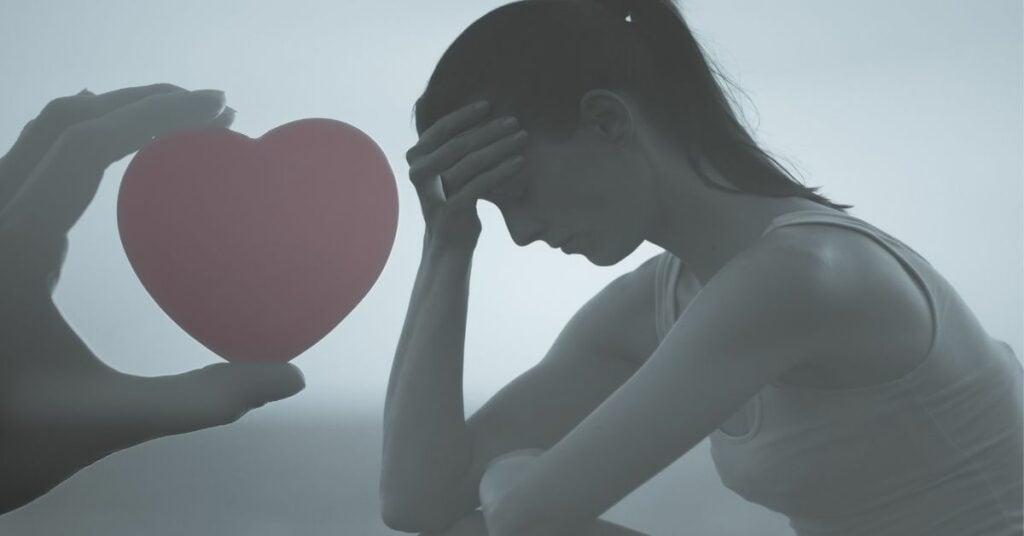Grooming
Reviewed by Susan Radzilowski, MSW, LMSW, ACSW

What is grooming?
“Grooming” refers to the way an abuser gradually works toward gaining a vulnerable person’s trust and affection so they can manipulate and exploit them later. It involves building an emotional connection and creating a sense of dependency before beginning to test their victim’s boundaries. Victims are usually children or teens, but they may also be young adults or grown adults. The perpetrator is most often someone the victim already knows.


People who use grooming behavior to get closer to their victims often do so for sexual reasons, but not always. Physical abuse, financial exploitation, and emotional manipulation can also be end goals.
This behavior can be hard to spot before abuse has actually happened. It often appears completely normal, which makes it tricky to define and identify.
Misuse of the term and its consequences
In recent years, misinformation about grooming has circulated in the news and on social media. American political extremists have weaponized this misinformation, falsely accusing members of the LGBTQIA+ community and their allies of “grooming” children through things like sex education, movies, library books, events, and campaigns.1 The accusers claim it’s all part of a plan to make kids more susceptible to sexual abuse.
In addition to being homophobic and transphobic, these false claims do nothing but cause unnecessary fear and panic. They also wrongly link unrelated issues to child sexual abuse, which makes it harder to identify and prevent actual abusive behaviors.
When people spread false messages about grooming, the experiences of real victims are devalued and attention is taken away from genuine cases of child sexual abuse. To help protect victims and vulnerable people, it’s important to be aware of what grooming really is and to help dispel false rumors about it.
What does the grooming process look like?
Grooming can happen online or in person. More than 90% of childhood sexual abuse is perpetrated by someone the child already knows, such as a family member, family friend, teacher, community group leader, or other person the victim interacts with regularly.2
There are different steps in the grooming process.3 They include:
- Finding a victim: A perpetrator may target a child or teen with specific vulnerabilities, such as a lack of supervision or social support.
- Establishing access and trust: A perpetrator may listen to the victim’s problems and provide support in order to gain their friendship and trust. They may also work to establish trust with the victim’s caregivers and community.
- Satisfying a need: Perpetrators offer victims something they may be lacking, like attention, understanding, or a sense of belonging.
- Isolating the victim: Perpetrators may offer to take their victim places they need or want to go, gaining access to the victim alone.
- Keeping the relationship a secret: The perpetrator may use the victim’s affection, fear of being blamed, or threats to keep them from talking about the relationship.
- Abusing the victim: Perpetrators may gradually escalate physical contact, activities, and conversations to make it easier to eventually commit an act of abuse—often sexual assault.
- Controlling the victim: Once abuse has begun, the perpetrator will work to maintain control over the victim and make sure the abuse won’t be disclosed.
For more information on how to spot and react to grooming behaviors, explore nonprofit Darkness to Light’s list of red flags and the Federal Bureau of Investigation’s tips on protecting kids.4, 5
Online grooming
It’s easier than ever to target victims online due to social media, gaming sites, forums, and other platforms where young people can connect. A UK study based on data from local police forces showed that online grooming has risen by 84% in the past four years.6 Police recorded 70 different apps and games used in grooming crimes, and Snapchat was one of the most popular platforms.
Perpetrators may use fake profiles to pose as someone the same age as their victim and use flattery or bribery to gain their trust. Once a perpetrator has built a connection with their victim, they may manipulate them into sending explicit photos or videos or participating in sexual conversations. They may also threaten to share the victim’s explicit content with their family or friends to keep them from talking about what’s happening.
Is grooming a crime?
Grooming is a criminal offense in many countries. The US Criminal Code defines grooming as enticement, or knowingly persuading, enticing, or coercing any child under 18 to engage in prostitution or criminal sexual activities.7 Penalties include fines and up to 20 years in prison.
Warning signs
Recognizing grooming behavior is the key to preventing abuse. Parents, caregivers, educators, and anyone else in a position of authority over vulnerable people should be aware of how to spot signs so that they can intervene early and protect the victim from exploitation.
Signs that an adult may be grooming a child include:8
- Showing excessive interest in the child
- Trying to spend time alone with the child
- Offering special privileges to the child, such as driving them to and from places
- Being a friend of the family, but showing more interest in developing a relationship with the child than with the adults
- Showing favoritism toward the child
- Giving the child gifts
- Bathing the child
- Walking in on a child changing or going to the bathroom
- Asking the child to join them in the bathroom
- Discussing sexual topics with the child
- Making inappropriate comments about the child’s body or appearance
- Playing games with the child that involve physical contact
- Taking pictures of children in underwear, bathing suits, and so on
- Sharing sexually explicit images with the child
Signs that a child or teen may be a victim of abuse include:9
- Increased talk of or interest in sexual topics
- Keeping secrets or seeming quieter than usual
- Not wanting to be left alone with certain people
- Wanting to spend an unusual amount of time alone
- Resistance to changing clothes or bathing
- Regressive behaviors, such as thumb-sucking or bed-wetting
- Overly compliant behavior
- Inappropriate sexual behavior
- Changes in eating or sleeping habits
- Changes in mood, such as aggression or persistent sadness
- Decreased confidence or self-esteem
- Increased anxiety, worry, or fearfulness
- Unexplained physical health concerns, such as stomachaches or headaches
- Loss of interest in school, activities, and friends
- Poorer performance in school
- Self-harming behaviors
- Substance abuse, including drugs or alcohol
- Suicidal ideation
- Signs of physical abuse, such as bruises or bleeding
- Sexually transmitted infections (STIs)
The impact on victims
Child sexual abuse can have devastating psychological effects on victims and survivors, including:10
- Anxiety
- Depression
- Posttraumatic stress disorder (PSTD)
- Substance abuse
- Eating disorders
- Sexual risk behaviors (such as having unprotected sex)
- Unstable relationships
- Trust issues
- Fear of intimacy
- Sexual dysfunction
Threats or acts of violence during the grooming process are linked to more severe trauma symptoms, and adult survivors of child sexual abuse are more likely to experience problems with perceiving dangerous situations.11, 12 It’s estimated that 50% of child sexual abuse victims experience revictimization, meaning they’re more likely to be abused again in the future.13
How to get help
If you’re aware or suspicious of a grooming situation, it may be hard to know what to do. If you think someone is in danger, report it immediately. In the US, incidents of child sex abuse are handled by local and state authorities.14 Call your local police or sheriff’s department to start the reporting process—or dial 911 if there’s an immediate threat to someone’s safety.
If you’re suspicious about a grooming situation but don’t suspect someone is in immediate danger, contact the National Sexual Assault Hotline by calling 800-656-HOPE (4673) or using online chat. The hotline offers free, safe, and confidential services from trained staff members who can help you find appropriate information, resources, health care facilities, long-term support, and more.
If the suspicious situation involves a child, you may want to contact the Childhelp National Child Abuse Hotline by calling or texting 800-422-4453. Professional crisis counselors are available to talk through child abuse situations, provide support, and help you find additional resources.
Additional resources
Grooming and child sexual abuse can be prevented through education and awareness. These resources are available to help you learn more:
- RAINN: The Rape, Abuse & Incest National Network provides resources on how to protect children from abuse. Select the “Sexual Violence” tab to learn about consent, laws, safety and prevention, and more.
- Darkness to Light: This nonprofit is dedicated to preventing child sexual abuse through education and community training. It also has a hotline you can call or text for support.
- Helping Survivors: This organization offers information on child sexual abuse, types of sexual violence, rideshare safety, and more.
- National Sexual Violence Resource Center (NSVRC): The NSVRC provides research and facts about sexual violence, as well as links to state-level resources for survivors.
- National Center for Missing & Exploited Children (NCMEC): The NCMEC has a tip line you can use to report child sexual exploitation and offers support to survivors and their families throughout the recovery process.
- InternetMatters.org: This UK-based resource gives advice on how to keep children safe while they’re online. It covers a wide range of issues including sexting, online grooming, pornography, and more.
The effects of grooming and child sexual abuse can last far beyond childhood and may also affect a victim’s loved ones. If you or someone you know needs help, reach out to a mental health professional today. Visit our directory to find a therapist near you.

Sources
1 https://nymag.com/intelligencer/2022/05/the-long-sordid-history-of-the-gay-conspiracy-theory.html
2 https://www.cdc.gov/violenceprevention/childsexualabuse/fastfact.html/
3 https://safechild.org/understanding-grooming/
4 https://www.d2l.org/child-grooming-signs-behavior-awareness/
5 https://www.fbi.gov/how-we-can-help-you/parents-and-caregivers-protecting-your-kids/
6 https://www.nspcc.org.uk/about-us/news-opinion/2022/online-grooming-crimes-rise/
7 https://www.law.cornell.edu/uscode/text/18/2422/
8 https://www.americanbar.org/groups/public_interest/child_law/resources/child_law_practiceonline/child_law_practice/vol-34/november-2015/understanding-sexual-grooming-in-child-abuse-cases/
9 https://www.rainn.org/warning-signs/
10 https://helpingsurvivors.org/long-term-effects-child-sexual-abuse-molestation/
11 https://www.ncbi.nlm.nih.gov/pmc/articles/PMC7750528/
12 https://www.nsvrc.org/sites/default/files/publications_NSVRC_ResearchBrief_Sexual-Revictimization.pdf
13 https://pubmed.ncbi.nlm.nih.gov/32573259/
14 https://www.justice.gov/criminal-ceos/report-violations/
About the author
The editorial team at therapist.com works with the world’s leading clinical experts to bring you accessible, insightful information about mental health topics and trends.
Related articles

Mental health effects of sexual assault and abuse
Sexual assault affects people physically, mentally, and emotionally. Learn how...

Religious trauma: Signs, symptoms, causes, and treatment
Learn about religious trauma and spiritual abuse, how they affect mental...

Abuse and domestic violence: How to recognize it and get help
Learn about different types of abuse, including domestic violence, and how to...
